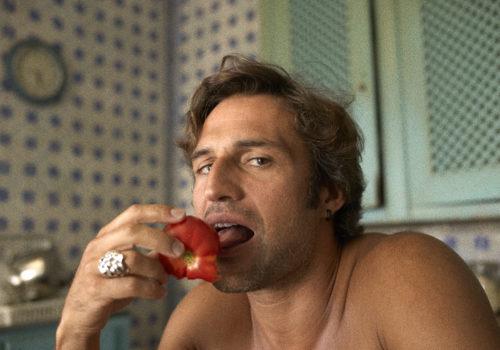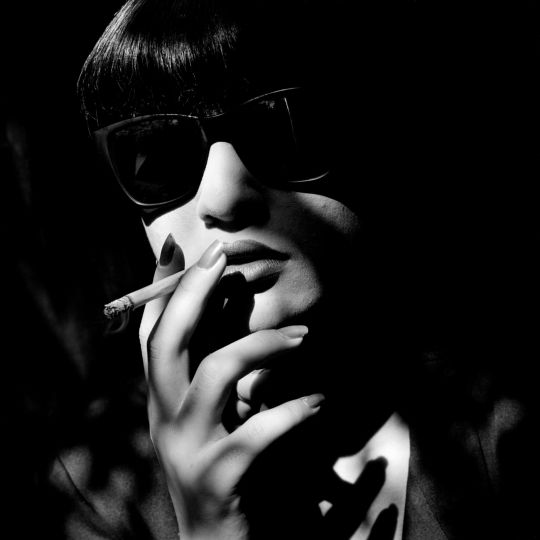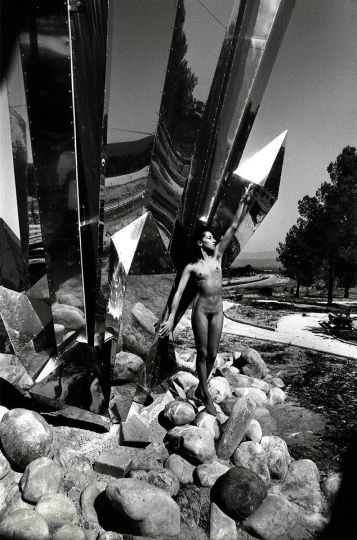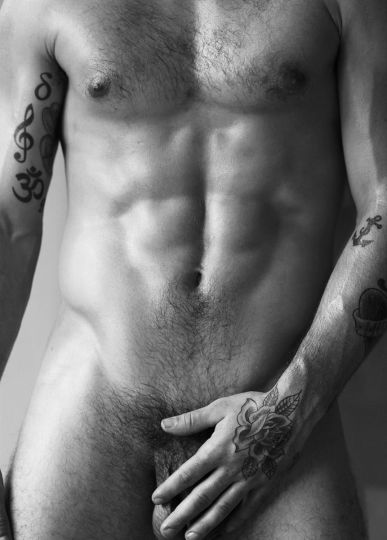This book is a project that Sonia Sieff has been working on for a very long time, in fact for as long as she can remember. It’s a kind of personal introspection, and unquestionably a tribute to mankind. Through her images, the artist takes a benevolent, tender and poetic look at masculinity, and puts men back in the game by exploring their nudity in an unprecedented way. We love it!
After a series of photos of naked women, you’ve just released an opus exclusively for men. How did you come up with this idea?
Sonia Sieff: I’d already worked on male nudes when I was in my twenties. Even then, I felt that the female nude was too obvious. But when I proposed this project to my publisher, he asked me to start with the woman. So I had no choice but to start with women. Nevertheless, this series of male nudes was a project I really wanted to do. I’ve been working on it since I was a young photographer. It’s not a sequel to “Les Françaises”, as you’ll have gathered, but rather my initial project. However, I’m glad I ended up doing it later, as it enabled me to sharpen my eye and, above all, gain a lot more experience.
Unlike the previous project, for which the women chosen were almost all friends, you knew almost none of the women for this project.
S.S.: That’s right. Probably because I wanted to get out of all possible comfort zones. For me, it was a question of going as far as I was capable of going. Knowing that I’m not a war reporter – an exercise I don’t know how to do, and which, above all, I couldn’t do emotionally – I told myself that in my own world, which is made up of a mixture of encounters and reports including all kinds of profiles, including well-known personalities, by photographing men who were unknown to me, there were fewer preconceptions, and less work to do beforehand.
Why didn’t you include “well-known” men you didn’t know?
S.S.: It was a conscious choice on my part, as photographing celebrities in portrait mode is already complicated by their often complex schedules, so asking them to let themselves be photographed nude was bound to be hellish. Not least because of the right of inspection they would inevitably have over the images, and I didn’t want that. What’s more, convincing well-known men, or even men you know, is complicated enough, because there are a lot of emotions that inevitably show through in the relationship, so it makes things more complex. And isn’t it said that it’s easier to “confide” in someone you don’t know?
Is it really so different with men?
S.S.: Yes, of course. With women, many of whom were girlfriends, it was much more comfortable. I’d go around France, call them up, drop in for an afternoon, have tea with them, tell them about our lives and take photos of them. It was very pleasant and much “easier” in a way. With the men, I put myself in danger. Most of them I didn’t know. As a result, I found myself in a huge zone of discomfort. Then, for this project, I traveled more to discover other cultures and a different relationship to nudity, which varied from country to country. In my experience, people in the North are more comfortable with the representation of their bodies than those in the South.
How did you go about choosing these men and the locations where you would be shooting?
S.S.: I started by contacting friends who lived in the various cities I wanted to visit. I asked them if they knew any men who would be willing to take part. As I also have responsibilities as a mother, I didn’t want to go away for more than a week. So, at first, we worked remotely. Once they’d accepted the idea, I’d go and meet them, and we’d often shoot the images at the same time. As for the locations, it could be their place, if they felt like it, or a place they liked. I found that the approach was different when I was in Northern Europe and in the South. In the North, it was easier for men to open their doors to me, whereas in the South, I often had to find places to shoot.
Was it easier to work with men?
S.S.: Yes and no. Most of the men had never posed before. If posing for a woman is more natural and instinctive, because they’ve been doing it for centuries, it’s also because they reproduce what they’ve seen in books, magazines or through works of art. So with men, there was something more raw, more authentic, less thought out.
Beyond nudity, what does it mean for a man to go naked?
S.S.: It’s a man who accepts his fear. He also accepts his sensitivity and his “feminine” side. Exposure is a psychological and intimate process. On the other hand, for each of these men, the process had a different meaning.
More generally, isn’t nudity a way of giving up, of letting go?
S.S.: Yes, exactly. That’s also why I called my book “Rendez-vous !”, in the sense that, of course, it was an encounter, but also a way of surrendering, of letting go to re-establish parity and balance. I didn’t objectify these men. That’s why there’s poetry and love in these images.
What was your creative process for this project?
S.S.: Nothing was written down. I didn’t know anything. I just set off with my Leica M6 slung over my shoulder and let things fall into place naturally.
How do you view today’s men?
S.S.: Initially, my attention was drawn to so-called “handsome” men. But from the very first meeting, I realized that I was looking for something else. That’s how I came to discover the masculine. Being a man today is complex. Men are more fragile than we think. They too are subject to many injunctions. It’s often said that we ask a lot of women, but we ask just as much of men.
Do you believe in friendship between men and women?
S.S.: Yes, absolutely. But it’s not often reciprocated.
What did you learn from this project?
S.S.: Above all, I learned that you can be both virile and sensitive. I also discovered that there’s a lot of ambivalence everywhere, and a lot of reading and nuance too. Above all, I realized that I was getting tired of this Manichean world we live in. It’s not enough to be either for or against. Not everything is black and white. So, it was time for me, in my own way, to bring some nuance to all this. We need to put an end to this masculine/feminine war and learn to listen to, understand and complement each other.
Why did you use film for this project?
S.S.: I started this project in digital for simplicity’s sake. But it turns out that I prefer complicated things. And above all, I wanted to be 100% with the person I was photographing, without having my nose permanently riveted to the screen to check the pose, the light and so on. I wanted to work in the most basic conditions possible: no assistant, and as much natural light as possible. I also wanted something intimate. All this also allowed me to do my own introspection at the same time. In the end, everything was linked.
How do you feel about the arrival of A.I.?
S.S.: You must move with the times. Nevertheless, it’s undeniable that it will be complicated for photographers to manage. On the other hand, there’s no doubt that it will open-up a whole new world of possibilities. As far as I’m concerned, it’s the disconnection from reality that worries me most. Of course, I see it as a tool for progress, but only if it doesn’t alienate us.
What does it mean to be a photographer in 2024?
S.S.: I think it’s hard to be a photographer today. Since the explosion of social networking, everyone’s a photographer. And unfortunately, a lot of photography is mediocre. But when you’re diligent, when you offer something different, it’s great. And I’m delighted to have the experience I have, to have known film, to know digital and to have seen its limits – because there are some – and to be able to manage all possible situations.
You’re a very committed woman, whatever you do. What makes you react most creatively, spiritually, or emotionally?
S.S.: I’ve had a strong sense of justice since I was very young. So, yes, injustice makes me react, leap, as does beauty, people becoming aware of things and making progress.
Any final words?
S.S.: I hope my book will mark a turning point.
Book : « Rendez-vous ! » – Rizzoli USA
https://www.rizzoliusa.com/book/9780847899678
Exhibition: until March 30, 2024 at the Galerie Baudoin Lebon, 21 rue Chapon, 75003 Paris from Tuesday to Saturday from 11 a.m. to 7 p.m.
http://www.baudoin-lebon.com/
















